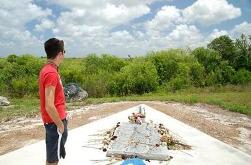 Last week, I took a trip to south Florida to see my grandma as a late Mother’s Day present. While I was down there with my friend, we went to the Valujet Airlines Flight 592 memorial site in the Everglades. Flight 592 experienced an in-flight fire back in 1996 and impacted the ground while attempting to return to Miami killing all 110 aboard the DC-9. Being involved in Aviation Safety, I knew how important it was to visit the site so that number one, the people are not forgotten and number two, that we remember our past and do not repeat our mistakes. The site was very touching and meeting a family of one of the flight attendants was also a good reminder of why I do what I do every day in the classroom.
Last week, I took a trip to south Florida to see my grandma as a late Mother’s Day present. While I was down there with my friend, we went to the Valujet Airlines Flight 592 memorial site in the Everglades. Flight 592 experienced an in-flight fire back in 1996 and impacted the ground while attempting to return to Miami killing all 110 aboard the DC-9. Being involved in Aviation Safety, I knew how important it was to visit the site so that number one, the people are not forgotten and number two, that we remember our past and do not repeat our mistakes. The site was very touching and meeting a family of one of the flight attendants was also a good reminder of why I do what I do every day in the classroom.
In April I got hired as a monorail pilot at the Walt Disney World Resort and I began my first day a few weeks after getting hired. My job is so cool! I get to interact with people from all over the world, load then drive 12 different color trains and promote a safe environment for my fellow cast members and guests.
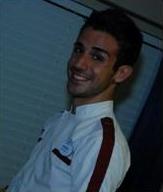 My first day on the job was fun. I got to actually take part in interacting with the guests and the trains. I learned my general duties as a monorail pilot and the safety procedures that are in place to maintain a safe yet efficient environment. My training comes in two parts; platform and drive. I will learn to actually drive the trains in about 30 days from my hire date but throughout the course of my platform training I will learn little by little the skills to successfully pilot a train.
My first day on the job was fun. I got to actually take part in interacting with the guests and the trains. I learned my general duties as a monorail pilot and the safety procedures that are in place to maintain a safe yet efficient environment. My training comes in two parts; platform and drive. I will learn to actually drive the trains in about 30 days from my hire date but throughout the course of my platform training I will learn little by little the skills to successfully pilot a train.
I also finished one of my aircraft cabin survivability projects which answered some chilling questions about the Lexington accident, the accident that changed my life and led me to pursue studies in aircraft safety.
In that accident, in a matter of just 10 minutes, people’s lives had changed forever knowing that their loved ones were dead and there was no reset button. This is why I have found that, when dealing with any accident, the hardest part of it is definitely the people. Then the investigation where we seek to finding out the order that the dominos fall. After the three years it took me to complete my Lexington survivability case study, I saw it from a different view that would change my view on what needs to be done in our industry to keep people alive.
 When I first started working on the case study in 2006, like many, I was under the impression that everyone had already lost their lives when the airplane came to a rest. Although tragically 38 occupants had already lost their lives upon impact, through extensive research techniques I was able to determine that the impacts were survivable for 2 crewmembers and 10 passengers. So I posed a question to the industry as a combined effort in survivability for Lexington. “Why do we stand here today with one occupant alive when 12 occupants survived the impact?”
When I first started working on the case study in 2006, like many, I was under the impression that everyone had already lost their lives when the airplane came to a rest. Although tragically 38 occupants had already lost their lives upon impact, through extensive research techniques I was able to determine that the impacts were survivable for 2 crewmembers and 10 passengers. So I posed a question to the industry as a combined effort in survivability for Lexington. “Why do we stand here today with one occupant alive when 12 occupants survived the impact?”
The answer was in finding out that the flight attendant’s only route of evacuation was jammed and it became evident that a timely Aircraft Rescue and Fire Fighting (ARFF) response time was of the essence in order for him and the 10 passengers to have any chance of getting out of the cabin.
At the conclusion of my Lexington study, having being very frustrated over the fact that it took Air Traffic Control at least two minutes to first notify ARFF of the accident, and then it took ARFF 8 minutes to respond to the scene, I decided that my Alert III project was necessary to educate the industry on the responsibility of first responders to survivable impacts as well as effective training for cabin crews to achieve the highest survivability rate.
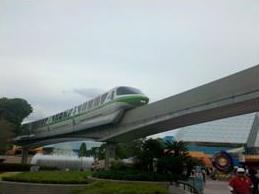 Alert III started out being a project simply focusing on proper flight attendant training and how that affects occupant survivability in combination with ARFF. After acquiring a few different textbooks and other resources, I decided to change the scope of the project to focus on everything that affects an occupant’s survivability and the responsibility between the two major players, flight crew and ARFF. While Alert III’s purpose was initially something completely different then what it turned out to be, it still achieved the goal of increasing awareness for not what only educating people in the need for survivability but also what affects survivability.
Alert III started out being a project simply focusing on proper flight attendant training and how that affects occupant survivability in combination with ARFF. After acquiring a few different textbooks and other resources, I decided to change the scope of the project to focus on everything that affects an occupant’s survivability and the responsibility between the two major players, flight crew and ARFF. While Alert III’s purpose was initially something completely different then what it turned out to be, it still achieved the goal of increasing awareness for not what only educating people in the need for survivability but also what affects survivability.
Although I haven’t studied other accidents in as much depth as Lexington, Lexington type accidents have and are happening where there are occupants alive when the aircraft finally stops and for one reason or another, the dominos fall and the fatality rate spikes. I cannot stress enough the need for effective communication in our industry because one small disconnect in communication or situational awareness can change a survivable accident into a death that shouldn’t have happened. It is important for Air Traffic Control, Flight Crews (Cabin and Flight Deck), as well as ARFF to come together and to work together as an emergency unfolds to change a matter of life and death.
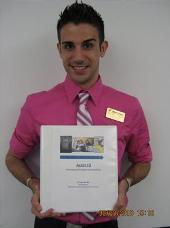 I have learned to never take for granted a takeoff climb or landing roll-out because I know the living hell and panic that people have gone through in our industry’s worst accidents. It is the events that follow in the wake of an accident that will dictate whether those involved walk away from it or not.
I have learned to never take for granted a takeoff climb or landing roll-out because I know the living hell and panic that people have gone through in our industry’s worst accidents. It is the events that follow in the wake of an accident that will dictate whether those involved walk away from it or not.
Finally, knowing that the challenges of survivability are huge undertakings, I found that if you are committed to the lives of the people who are sitting in a burning aircraft and you are the person who knows they are making a difference in saving their life, those undertakings quickly become one of the most amazing and self-fulfilling feelings ever. Since an accident happens so fast and for the occupants and their families there is no reset button, having the highest possible occupant survival rate is crucial in our industry when an accident does occur. On our continued road to a safer aircraft cabin environment…
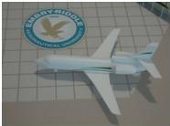 I flew to Nashville to give myself a mini-vacation and to get on the endangered species of a bird, the DC-9-40. It was pretty cool to get on one of seven remaining aircraft in the world. I got to fly one of four remaining DC-9-30s on the leg back. It brought me back to my days of being 18 years old, pre-Riddle and doing what I did best and loving every minute of it.I start my final chapter at Embry-Riddle on Tuesday. It is kind of scary actually. I remember walking through the doors as a freshman trying to find every loophole to drop out and go back to flying 7 days a week, but now it’s here and I’m not sure I’m ready.
I flew to Nashville to give myself a mini-vacation and to get on the endangered species of a bird, the DC-9-40. It was pretty cool to get on one of seven remaining aircraft in the world. I got to fly one of four remaining DC-9-30s on the leg back. It brought me back to my days of being 18 years old, pre-Riddle and doing what I did best and loving every minute of it.I start my final chapter at Embry-Riddle on Tuesday. It is kind of scary actually. I remember walking through the doors as a freshman trying to find every loophole to drop out and go back to flying 7 days a week, but now it’s here and I’m not sure I’m ready.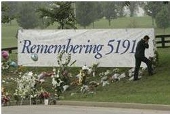 I found a lot of people I care about here and people who care about me (or they would have let me drop out and not finish my education).Further, when I went to Oklahoma, I was surrounded by employers who were very impressed with my photographic memory of accidents past, specific safety-related events and ideas for ways to improve safety. So I think that my education paid off at Embry-Riddle and I will be put into a position where I cannot only say that I did something to help change, I think I’ll actually achieve it.
I found a lot of people I care about here and people who care about me (or they would have let me drop out and not finish my education).Further, when I went to Oklahoma, I was surrounded by employers who were very impressed with my photographic memory of accidents past, specific safety-related events and ideas for ways to improve safety. So I think that my education paid off at Embry-Riddle and I will be put into a position where I cannot only say that I did something to help change, I think I’ll actually achieve it.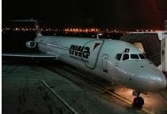 I can’t believe that the time just kept marching on and I am four years older and wiser.On the 26th I will be flying out to Kentucky with a friend who works for Comair and he will be working the 0600 departure back from Lexington to Atlanta on the 27th. It will be a mirror of the accident flight four years earlier, but it was something he needed to do for himself, and he asked me if I would tag along for moral support. The one thing that we were talking about was how back in 2006, on the 26th, flying seemed fun, safe, and a way of life, but on the 27th we woke up, and it had all changed.
I can’t believe that the time just kept marching on and I am four years older and wiser.On the 26th I will be flying out to Kentucky with a friend who works for Comair and he will be working the 0600 departure back from Lexington to Atlanta on the 27th. It will be a mirror of the accident flight four years earlier, but it was something he needed to do for himself, and he asked me if I would tag along for moral support. The one thing that we were talking about was how back in 2006, on the 26th, flying seemed fun, safe, and a way of life, but on the 27th we woke up, and it had all changed.

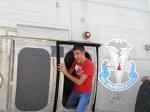 I went out to Oklahoma City and went to the FAA Cabin Safety Research facility and worked on some interesting projects with airline professionals from all over the world. We did evacuation drills and saw that even the most experienced in the industry still have trouble evacuating a smoke filled aircraft. The fire exercises were the most difficult for me emotionally though. The flight attendant trainers made an interesting comment. “This is a step up from initial” I nodded and we talked to the FAA facilitator. She told us that this is a better simulation of an actual crash. I definitely have a new respect for smoke inhalation victims after doing this exercise. As I exited the aircraft and saw the light, and fresh air, I needed a second to recover. The rest of the night was a little difficult for me as well. The next day we did fire exercises to test the effective use of the flight attendant vs. fires. Later that night we all went into downtown Oklahoma City and did some of the touristy stuff such as boat tours and local restaurants. We had such as great time together. I would have to say though that the pool day was the best. The life raft drills were the best to show how flight attendants and passengers really need to work as a team to make sure that no one falls overboard or gets out the plane. I loved my “Crew” for the week and it was so hard to leave them. Luckily, I impressed the crowd with my ability to counter argue anything that was thrown at us by being able to photographically layout any accident or piece of information from research that was thrown at us. In the end it looks like I will have an internship lined up in a cabin safety-related field to better educate the future of flight attendants forever!
I went out to Oklahoma City and went to the FAA Cabin Safety Research facility and worked on some interesting projects with airline professionals from all over the world. We did evacuation drills and saw that even the most experienced in the industry still have trouble evacuating a smoke filled aircraft. The fire exercises were the most difficult for me emotionally though. The flight attendant trainers made an interesting comment. “This is a step up from initial” I nodded and we talked to the FAA facilitator. She told us that this is a better simulation of an actual crash. I definitely have a new respect for smoke inhalation victims after doing this exercise. As I exited the aircraft and saw the light, and fresh air, I needed a second to recover. The rest of the night was a little difficult for me as well. The next day we did fire exercises to test the effective use of the flight attendant vs. fires. Later that night we all went into downtown Oklahoma City and did some of the touristy stuff such as boat tours and local restaurants. We had such as great time together. I would have to say though that the pool day was the best. The life raft drills were the best to show how flight attendants and passengers really need to work as a team to make sure that no one falls overboard or gets out the plane. I loved my “Crew” for the week and it was so hard to leave them. Luckily, I impressed the crowd with my ability to counter argue anything that was thrown at us by being able to photographically layout any accident or piece of information from research that was thrown at us. In the end it looks like I will have an internship lined up in a cabin safety-related field to better educate the future of flight attendants forever!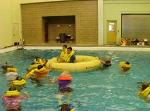 All I can say is sometimes you cannot help it, the action gets to you and you can’t tell the difference between reality and research or simulation. You start to believe that the events unfolding around you are real, the sounds of screeching metal, the smell of fire and burning furnishings, and the sounds of the screaming. You can forget how scary a deceleration process and post crash environment can be and there’s only one thing you can do…fasten your seatbelt!
All I can say is sometimes you cannot help it, the action gets to you and you can’t tell the difference between reality and research or simulation. You start to believe that the events unfolding around you are real, the sounds of screeching metal, the smell of fire and burning furnishings, and the sounds of the screaming. You can forget how scary a deceleration process and post crash environment can be and there’s only one thing you can do…fasten your seatbelt!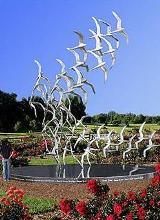
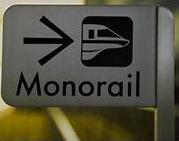
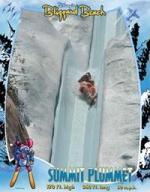
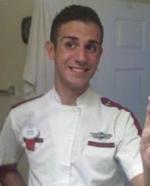 Monorail is the best place to be on Disney property. Not only are we awesome, but the fast-paced working environment reminds me of the airline industry. Like Jet Fuel, the hustle and bustle of moving trains and people has gotten into my blood and I can’t control the want to be at work. The trains are so much fun to play with and I can’t believe I’m getting paid to have this much fun! The other part I love about my job is making magical moments for my guests. From handouts to a friendly smile, bringing the joy to them as Disney did for me when I was there for the first time is what makes this job oh so much better than anything else.
Monorail is the best place to be on Disney property. Not only are we awesome, but the fast-paced working environment reminds me of the airline industry. Like Jet Fuel, the hustle and bustle of moving trains and people has gotten into my blood and I can’t control the want to be at work. The trains are so much fun to play with and I can’t believe I’m getting paid to have this much fun! The other part I love about my job is making magical moments for my guests. From handouts to a friendly smile, bringing the joy to them as Disney did for me when I was there for the first time is what makes this job oh so much better than anything else.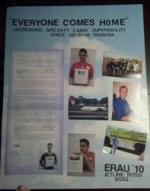 I’ve been continuing my work on my “Everyone Comes Home” Program and it is coming together nicely. I launched the program and it got its final name in a conversation with Kelly’s significant other in December of last year. “He never promised me much, he just promised me he’d be home from that trip” got my wheels turning on a name for a program for occupant survivability. It finally hit me listening to Bryan Adam’s “I Will Always Return” and the name stuck. The program is exactly what the name implies. It is a program that we in the safety field need to make sure that everyone (Flight Crew or Passengers) comes home from a trip. The program entails education in the Cabin Safety and Survival field from potential injuries one may incur to the effective efforts of fire fighting from Aircraft Rescue and Fire Fighting. It is an extensive 300 page program written by yours truly. The poster came out great minus some crooked letters J but I’m going to make a final poster soon. It was a rough draft to get my point across.
I’ve been continuing my work on my “Everyone Comes Home” Program and it is coming together nicely. I launched the program and it got its final name in a conversation with Kelly’s significant other in December of last year. “He never promised me much, he just promised me he’d be home from that trip” got my wheels turning on a name for a program for occupant survivability. It finally hit me listening to Bryan Adam’s “I Will Always Return” and the name stuck. The program is exactly what the name implies. It is a program that we in the safety field need to make sure that everyone (Flight Crew or Passengers) comes home from a trip. The program entails education in the Cabin Safety and Survival field from potential injuries one may incur to the effective efforts of fire fighting from Aircraft Rescue and Fire Fighting. It is an extensive 300 page program written by yours truly. The poster came out great minus some crooked letters J but I’m going to make a final poster soon. It was a rough draft to get my point across.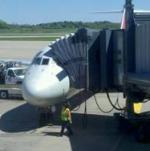 Next week I am going to go flying to Nashville to get on the Douglas DC-9-40. There are only 7 in the world and I can’t wait to get on one. It is a rare treat and a nice change from the Airbus A320 or 737-NG. I am also enjoying working in the admissions phone room. Again, because I get to help out people who are calling to ask questions about the university and applying. I think I can sum it up into one sentence that I REALLY like helping people out and making their day just a little bit better!
Next week I am going to go flying to Nashville to get on the Douglas DC-9-40. There are only 7 in the world and I can’t wait to get on one. It is a rare treat and a nice change from the Airbus A320 or 737-NG. I am also enjoying working in the admissions phone room. Again, because I get to help out people who are calling to ask questions about the university and applying. I think I can sum it up into one sentence that I REALLY like helping people out and making their day just a little bit better! Last week, I took a trip to south Florida to see my grandma as a late Mother’s Day present. While I was down there with my friend, we went to the Valujet Airlines Flight 592 memorial site in the Everglades. Flight 592 experienced an in-flight fire back in 1996 and impacted the ground while attempting to return to Miami killing all 110 aboard the DC-9. Being involved in Aviation Safety, I knew how important it was to visit the site so that number one, the people are not forgotten and number two, that we remember our past and do not repeat our mistakes. The site was very touching and meeting a family of one of the flight attendants was also a good reminder of why I do what I do every day in the classroom.
Last week, I took a trip to south Florida to see my grandma as a late Mother’s Day present. While I was down there with my friend, we went to the Valujet Airlines Flight 592 memorial site in the Everglades. Flight 592 experienced an in-flight fire back in 1996 and impacted the ground while attempting to return to Miami killing all 110 aboard the DC-9. Being involved in Aviation Safety, I knew how important it was to visit the site so that number one, the people are not forgotten and number two, that we remember our past and do not repeat our mistakes. The site was very touching and meeting a family of one of the flight attendants was also a good reminder of why I do what I do every day in the classroom. My first day on the job was fun. I got to actually take part in interacting with the guests and the trains. I learned my general duties as a monorail pilot and the safety procedures that are in place to maintain a safe yet efficient environment. My training comes in two parts; platform and drive. I will learn to actually drive the trains in about 30 days from my hire date but throughout the course of my platform training I will learn little by little the skills to successfully pilot a train.
My first day on the job was fun. I got to actually take part in interacting with the guests and the trains. I learned my general duties as a monorail pilot and the safety procedures that are in place to maintain a safe yet efficient environment. My training comes in two parts; platform and drive. I will learn to actually drive the trains in about 30 days from my hire date but throughout the course of my platform training I will learn little by little the skills to successfully pilot a train. When I first started working on the case study in 2006, like many, I was under the impression that everyone had already lost their lives when the airplane came to a rest. Although tragically 38 occupants had already lost their lives upon impact, through extensive research techniques I was able to determine that the impacts were survivable for 2 crewmembers and 10 passengers. So I posed a question to the industry as a combined effort in survivability for Lexington. “Why do we stand here today with one occupant alive when 12 occupants survived the impact?”
When I first started working on the case study in 2006, like many, I was under the impression that everyone had already lost their lives when the airplane came to a rest. Although tragically 38 occupants had already lost their lives upon impact, through extensive research techniques I was able to determine that the impacts were survivable for 2 crewmembers and 10 passengers. So I posed a question to the industry as a combined effort in survivability for Lexington. “Why do we stand here today with one occupant alive when 12 occupants survived the impact?” Alert III started out being a project simply focusing on proper flight attendant training and how that affects occupant survivability in combination with ARFF. After acquiring a few different textbooks and other resources, I decided to change the scope of the project to focus on everything that affects an occupant’s survivability and the responsibility between the two major players, flight crew and ARFF. While Alert III’s purpose was initially something completely different then what it turned out to be, it still achieved the goal of increasing awareness for not what only educating people in the need for survivability but also what affects survivability.
Alert III started out being a project simply focusing on proper flight attendant training and how that affects occupant survivability in combination with ARFF. After acquiring a few different textbooks and other resources, I decided to change the scope of the project to focus on everything that affects an occupant’s survivability and the responsibility between the two major players, flight crew and ARFF. While Alert III’s purpose was initially something completely different then what it turned out to be, it still achieved the goal of increasing awareness for not what only educating people in the need for survivability but also what affects survivability. I have learned to never take for granted a takeoff climb or landing roll-out because I know the living hell and panic that people have gone through in our industry’s worst accidents. It is the events that follow in the wake of an accident that will dictate whether those involved walk away from it or not.
I have learned to never take for granted a takeoff climb or landing roll-out because I know the living hell and panic that people have gone through in our industry’s worst accidents. It is the events that follow in the wake of an accident that will dictate whether those involved walk away from it or not.